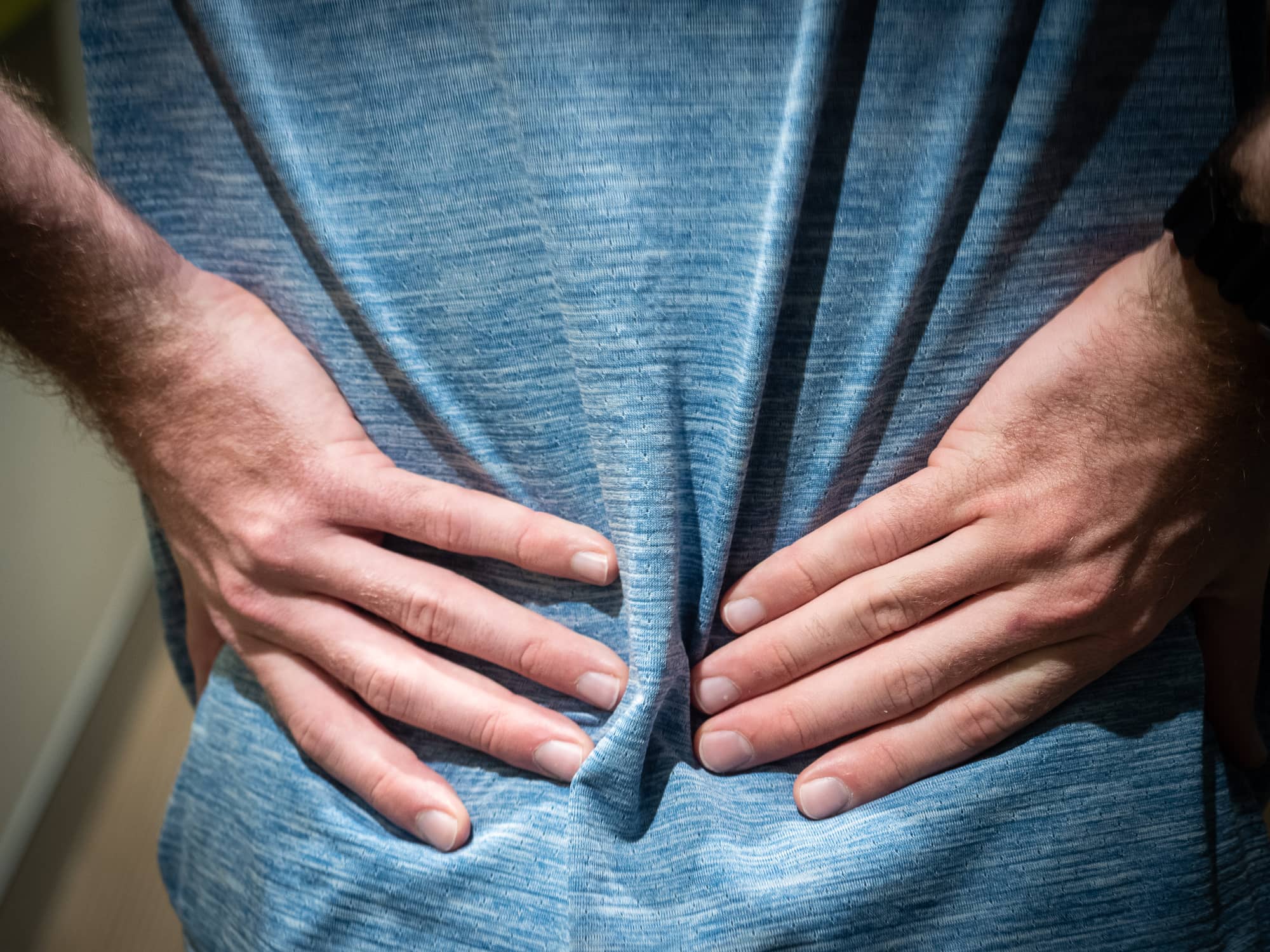
The muscles that are located around the spine have specific functions in the control of movement posture and balance. Here we will specifically discuss the muscles at the back, but there are important muscles at the front as well.
On your back, the muscles can be divided into superficial (on the surface) and deep (close to the spinal column). The larger muscles closer to the surface, like longissimus, span a large distance and are responsible for making gross movements of the spine. When you stand up after bending over, these muscles are the ones that are mainly providing the force to make you move. There are other muscles that we call deep muscles that are in closer to your spine and of particular interest is the multifidus. The way that these muscles are positioned means that they are less responsible for movement but are able to stabilise each segment of your spine individually. Not only that, but the multifidus muscle is also full of ‘sensors’ that report the position of the spine back to your brain, so it can accurately predict and control movement. Having both the capacity to stabilise and the control over what and when to stabilise is a critical function in keeping your spine within what we call a normal range of motion.
There is no single way that back pain starts. Sometimes it is the result of an injury, sometimes as a natural consequence of ageing, but often there isn’t a clear ‘precipitating event’. Some back pain has a very obvious pathological cause, which makes the treatment decision more clear, but there are a lot of cases where the source of pain is not so obvious. This is called ‘non-specific low back pain’. We believe that muscles play an important role in this type of pain.
Non-specific low back pain may be the result of multiple overlapping factors and degenerative changes in the spine rather than a single painful source. Pain can arise from the joints, the intervertebral disc, spinal ligaments and tendons, and muscles. Often the supporting muscles of the lower back can spasm which can be a very painful experience. This is a protective reflex that acts like a splint when your back starts to move through abnormal ranges of motion or as a response to pain and or mechanical signals reaching your spine and brain. This can occur with acute or chronic low back pain. What this tells us, regardless of whether it is a physiologically appropriate response, is that the body is trying to functionally stabilise the spine in order to minimise these pain and mechanical overload signals.
In some people, the activation of muscles becomes neurologically inhibited, either as a response to pain or as a result of the neurological drive to muscle being distorted. Sometimes motor control exercise can help in this situation but equally because the muscle is inhibited it becomes difficult to voluntarily train. Inhibited muscles tend to atrophy and get replaced with fat and connective tissue further reducing their functional capacity resulting in further inhibition and pain driving a vicious circle of pain, inhibition, dynamic instability, and lack of functional control. In particular, these changes are very evident in the multifidus muscle, which sits deep in the posterior part of your core spinal muscles.
This dysfunction has been shown by multiple researchers in multiple ways including MRI imaging of fatty infiltration of the muscle, inflammatory changes with histology, and changes in strength and timing of muscle activation with EMG. It seems counterintuitive that the muscle that is primarily there to stabilise your spine stops working when it is needed most, but unfortunately, that is what happens to many of us. There are a number of explanations as to why the multifidus is so sensitive to low back pain, but more than likely, there are multiple underlying factors. It is generally accepted that the multifidus becomes inhibited as a result of pain avoidance or missing neurological signals, but regardless of the cause of multifidus dysfunction, the consequences are what is really important.
There is a strong correlation between chronic low back pain and when we see a multifidus that doesn’t activate appropriately or has had a significant volume of the muscle replaced with fat and connective tissue. As the spine undergoes so many complex movements, we need it to stabilise each segment by applying the right amount of force at the right time across each individual segment of the spine. When the muscle doesn’t work properly, we can get the magnitude and or the timing wrong of that stabilising force wrong. This leads to a loss of control of dynamic stability and means that elements of the spine can move outside the normal range of motion, causing tissues to become painful. This begins a cycle of muscle dysfunction causing pain and then pain causing further muscle dysfunction.
Therefore, the muscles of the spine play a vital role in stabilising this complex structure. Acute muscle spasms and long-term muscle dysfunction are important contributors to low back pain.
